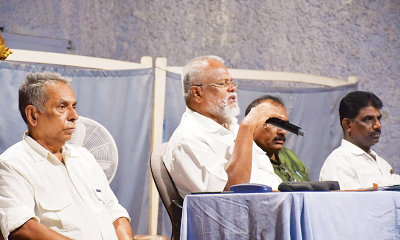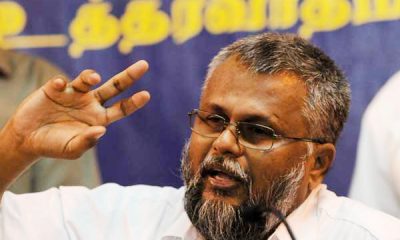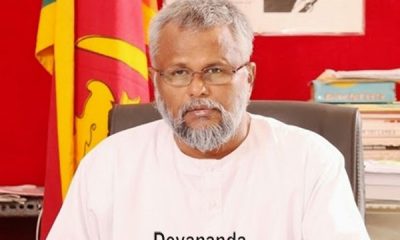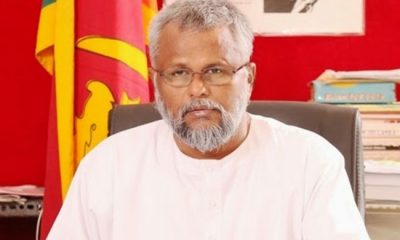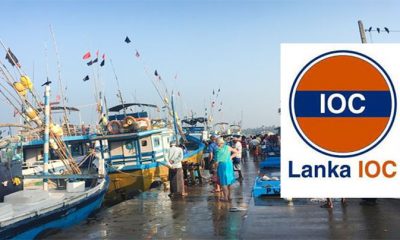News
Devananda calls for end to illegal fishing by Indians in Lankan waters
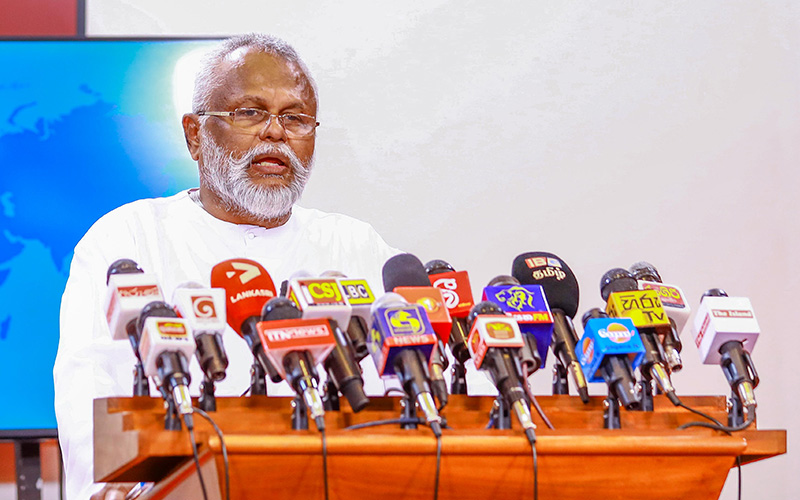
Sixty-nine Sri Lankan fishing boats are in Indian custody, Minister of Fisheries Douglas Devananda has said during a recent televised interview.Hundreds of Indian boats arrive in Sri Lankan waters and use destructive bottom trawling techniques in the territorial waters of Sri Lanka, the Minister said.
“They have destroyed all marine resources in the Indian territorial waters using these disastrous techniques and they are doing the same in our waters. This has been happening for a long time and things have gradually become worse. That is why our fishermen are protesting.”
Devananda said that during the war, Sri Lankan fishermen had not been able to fish in certain parts of the country’s territorial waters. During our absence, Indian fishermen started poaching in our waters, he said.
“Now, our fishermen are back but the Indians are not stopping. They are extracting our resources. The war ended 15 years ago, and we have still not been able to solve this. This is partially our fault. We have not taken up this issue forcefully. We must tackle this issue legally and diplomatically,” he said. Sri Lanka has banned bottom trawling in 2017/18 and the Fisheries (Regulation of Foreign Fishing Boats) Act of 2018, Sri Lanka has a number of tools it can use to tackle poaching by Indian fishermen.
“We now arrest and jail owners and skippers of Indian boats. There are five Indian skippers in Sri Lankan jails now. The Tamil Nadu Minister of Fisheries spoke to me on the phone recently and asked me to come there for discussions to solve the fishermen’s issues. I said I will come if you stop your fishermen coming this way. He agreed.
I also spoke to Tamil Nadu Chief Minister, Stalin and he also agreed to stop Indian fishermen coming this way. This is election time in Tamil Nadu. Once the elections are over, we can start negotiations,” he said. Devananda said he spoke to President Ranil Wickremesinghe almost on a daily basis and urged the latter to deploy the Navy to chase away Indian fishermen. The President had also given instructions to the Navy, but the scale of our response is inadequate, he said.
Tamil MPs visited India often and they met the Indian High Commissioner and his deputies here, Devananda said, adding that they hardly talked about the issues faced by Sri Lankan fishermen with Indian officials, he said.”Earlier, Tamil Nadu asked me to allow Indian fishermen to use Sri Lankan waters for two years. I said that could not be done.
The Indians arrive in hundreds of boats and they can cause irreparable damage in a single day. The 1974 and 1976 agreements, taken together with the Exchange of Letters, were signed between Kewal Singh, the then Foreign Secretary to the Government of India, and W.T. Jayasinghe, then Secretary to the Ministry of Defence and Foreign Affairs of Sri Lanka, has put the question of fishing rights beyond doubt.
Paragraph 1 of the Exchange of Letters very clearly rules out any fishing rights for the fishermen of the two States in the waters of the other State which reads as follows; “fishing vessels and fishermen of India shall not engage in fishing in the historic waters, the territorial sea and the EEZ of Sri Lanka, nor shall the fishing vessels and fishermen of Sri Lanka engage in fishing in the historic waters, the territorial sea and the EEZ of India, without the express permission of Sri Lanka or India, as the case may be.”
While Indians lost access to Sri Lankan waters, local fishermen lost access to Pedro Bank, and Wadge Bank, the continental shelves off Cape Comorin at the southern tip of India, which had been profitable commercial fishing grounds since the 1920s for both Indian and Sri Lankan boats.
News
Financial contributions received for ‘Rebuilding Sri Lanka’ Fund

The Government’s ‘Rebuilding Sri Lanka’ Fund, established to provide relief and support to communities affected by Cyclone Ditwah, continues to receive financial contributions on a daily basis.
Accordingly, the Containers Transport Owners Association made a financial contribution of Rs. 1.5 million, while the Association of SriLankan Airlines Licensed Aircraft Engineers contributed Rs. 1.35 million to the Fund.
The respective cheques were formally presented to the Secretary to the President, Dr. Nandika Sanath Kumanayake, at the Presidential Secretariat on Friday (19).
The occasion was attended by W. M. S. K. Manjula, Chairman of the Containers Transport Owners Association, together with Dilip Nihal Anslem Perera and Jayantha Karunadhipathi.
Representing the Association of SriLankan Airlines Licensed Aircraft Engineers were Deshan Rajapaksa, Samudika Perera and Devshan Rodrigo handed over the cheque.
News
UNICEF representatives and PM discuss rebuilding schools affected by the Disaster

A meeting between Prime Minister Dr. Harini Amarasuriya and a delegation of UNICEF representatives was held on Saturday, (December 20) at the Prime Minister’s Office.
During the meeting, the Prime Minister explained the measures taken by the Government to ensure the protection of the affected student community and to restore the damaged school system, as well as the challenges encountered in this process.
The Prime Minister stated that reopening schools located in landslide-prone areas would be extremely dangerous. Accordingly, the Government is focusing on identifying such schools and relocating them to suitable locations based on scientific assessments.
The Prime Minister further noted that financial assistance has been provided to students affected by the disaster, enabling parents to send their children back to school without an additional financial burden. Emphasizing that school is the safest place for children after their homes, the Prime Minister expressed confidence that the school environment would help restore and improve students’ mental well-being
The Prime Minister also highlighted that attention has been given to several key areas, including the relocation of disaster-affected schools, restoration of school infrastructure, merging and operating certain schools jointly, facilitating teaching and learning through digital and technological strategies, and providing special transportation facilities. She emphasized that the Government is examining these issues and is committed to finding long-term solutions.
The UNICEF representatives commended the Government’s commitment and the initiatives undertaken to restore the education sector and assured their support to the Government. Both parties also discussed working together collaboratively on future initiatives.
The meeting was attended by the UNICEF representatives to Sri Lanka Emma Brigham, Lakshmi Sureshkumar, Nishantha Subash, and Yashinka Jayasinghe, along with Secretary to the Ministry of Education Nalaka Kaluwewa, Director of Education Dakshina Kasturiarachchi, Deputy Directors Kasun Gunarathne and Udara Dikkumbura.
(Prime Minister’s Media Division)
News
NMRA laboratory lacks SLAB accreditation

Drug controversy:
“Setting up state-of-the-art drug testing facility will cost Rs 5 billion”
Activists call for legal action against politicians, bureaucrats
Serious questions have been raised over Sri Lanka’s drug regulatory system following revelations that the National Medicines Regulatory Authority’s (NMRA) quality control laboratory is not accredited by the Sri Lanka Accreditation Board (SLAB), casting doubt on both the reliability of local test results and the adequacy of oversight of imported medicines.
Medical and civil rights groups warn that the issue points to a systemic regulatory failure rather than an isolated lapse, with potential political and financial consequences for the State.
Chairman of the Federation of Medical and Civil Rights Professional Associations, Specialist Dr. Chamal Sanjeewa, said the controversy surrounding the Ondansetron injection, which was later found to be contaminated, had exposed deep weaknesses in drug regulation and quality assurance.
Dr. Sanjeewa said that the manufacturer had confirmed that the drug had been imported into Sri Lanka on four occasions this year, despite later being temporarily withdrawn from use. The drug was manufactured in India in November 2024 and in May and August 2025, and imported to Sri Lanka in February, July and September. On each occasion, 67,600 phials were procured.
Dr. Sanjeewa said the company had informed the NMRA that the drug was tested in Indian laboratories, prior to shipment, and passed all required quality checks. The manufacturer reportedly tested the injections against 10 parameters, including basic quality standards,
pH value, visual appearance, component composition, quantity per phial, sterility levels, presence of other substances, bacterial toxin levels and spectral variations.
According to documents submitted to the NMRA, no bacterial toxins were detected in the original samples, and the reported toxin levels were within European safety limits of less than 9.9 international units per milligram.
Dr. Sanjeewa said the credibility of local regulatory oversight had come under scrutiny, noting that the NMRA’s quality control laboratory was not SLAB-accredited. He said establishing a fully equipped, internationally accredited laboratory would cost nearly Rs. 5 billion.
He warned that the failure to invest in such a facility could have grave consequences, including continued loss of life due to substandard medicines and the inability of the State to recover large sums of public funds paid to pharmaceutical companies for defective drugs.
“If urgent steps are not taken, public money will continue to be lost and accountability will remain elusive,” Dr. Sanjeewa said.
He added that if it was ultimately confirmed that the drug did not contain bacterial toxins at the time it entered Sri Lanka, the fallout would be even more damaging, severely undermining the credibility of the country’s health system and exposing weaknesses in health administration.
Dr. Sanjeewa said public trust in the health sector had already been eroded and called for legal action against all politicians and public officials responsible for regulatory failures linked to the incident.
by Chaminda Silva ✍️
-

 Midweek Review6 days ago
Midweek Review6 days agoHow massive Akuregoda defence complex was built with proceeds from sale of Galle Face land to Shangri-La
-

 News5 days ago
News5 days agoPope fires broadside: ‘The Holy See won’t be a silent bystander to the grave disparities, injustices, and fundamental human rights violations’
-

 News5 days ago
News5 days agoPakistan hands over 200 tonnes of humanitarian aid to Lanka
-

 Business4 days ago
Business4 days agoUnlocking Sri Lanka’s hidden wealth: A $2 billion mineral opportunity awaits
-
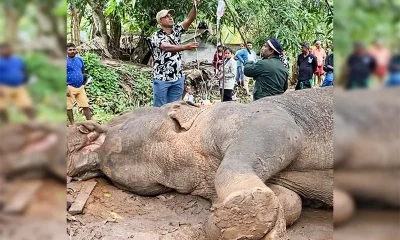
 News6 days ago
News6 days agoBurnt elephant dies after delayed rescue; activists demand arrests
-

 Editorial6 days ago
Editorial6 days agoColombo Port facing strategic neglect
-

 News4 days ago
News4 days agoArmy engineers set up new Nayaru emergency bridge
-

 News6 days ago
News6 days agoSri Lanka, Romania discuss illegal recruitment, etc.


